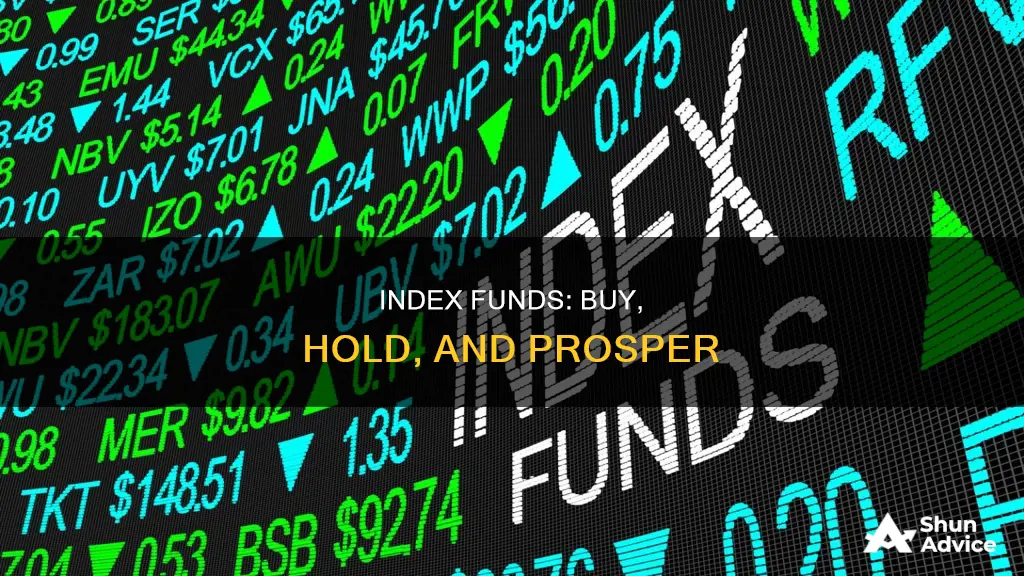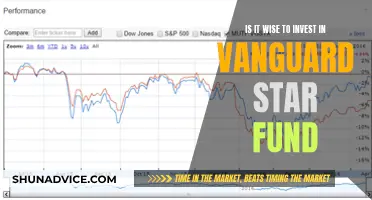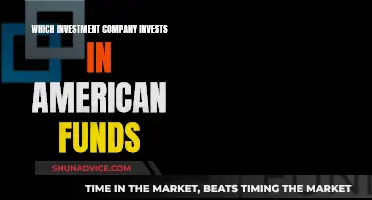
Index funds are a type of mutual fund or exchange-traded fund (ETF) that tracks the performance of a market index, such as the S&P 500, by holding a representative sample of the same stocks or bonds. They are passively managed, meaning they aim to replicate the performance of an index rather than beat it. This makes them a low-cost, low-maintenance investment option.
Index funds are a popular choice for investors seeking low-cost, diversified, and passive investments that tend to outperform many higher-fee, actively traded funds. They are ideal for long-term investing, such as retirement accounts, and are designed to replicate the performance of financial market indexes.
While index funds offer advantages like lower risk through diversification and solid long-term returns, they are also subject to market swings and lack the flexibility of active management. Despite these limitations, index funds are often favoured for their consistent performance and are now a staple in many investment portfolios.
| Characteristics | Values |
|---|---|
| Type | Mutual fund or Exchange-Traded Fund (ETF) |
| Aim | Match the performance of a designated index |
| Management | Passive |
| Risk | Low |
| Fees | Low |
| Returns | Consistently high |
| Tax | Efficient |
What You'll Learn

The S&P 500 Index
The S&P 500 has returned an average of about 10% annually over time and represents hundreds of America's best companies. The index includes companies such as Microsoft, Amazon, Alphabet, Meta Platforms, and Berkshire Hathaway.
S&P 500 index funds are a popular investment choice. These funds allow you to hold a stake in hundreds of stocks, even if you own just one share of the index fund. They are also a great way to diversify your portfolio, as the broad collection of companies means you lower your risk through diversification.
S&P 500 index funds also offer low costs (meaning they have low expense ratios) because they are passively managed, rather than actively managed. As a result, more of your money is invested instead of paid to fund managers as fees.
The Vanguard S&P 500 ETF (VOO) and the Vanguard 500 Index Fund Admiral Shares (VFIAX) are two popular S&P 500 index funds with extremely low fees.
If you're considering investing in an S&P 500 index fund, you can set up your account to buy the index fund on autopilot, or you can enter your trades manually. You can buy an S&P 500 index fund through a taxable brokerage account, a 401(k), or an IRA.
Mutual Fund Investment: Tracking and Monitoring Basics
You may want to see also

The Dow Jones Industrial Average
The DJIA was created by Charles Dow in 1896 and is considered a gauge of the broader U.S. economy. It is the second-oldest U.S. market index after the Dow Jones Transportation Average. The index initially contained just 12 American companies but has since expanded to 30. The companies included in the index are selected by an independent Wall Street Journal commission and are chosen to represent the state of the overall economy.
The DJIA is a widely watched benchmark index and is considered one of the most important stock indexes in the world. It is often referred to simply as "the Dow". The index includes companies from all major U.S. sectors, except utilities and transportation. Some of the companies currently included in the DJIA are Microsoft, Home Depot, Coca-Cola, and Disney.
Individuals can invest in the DJIA through exchange-traded funds (ETFs) such as the SPDR Dow Jones Industrial Average ETF (DIA).
Best Growth Mutual Funds: Where to Invest?
You may want to see also

The Nasdaq Composite Index
The Nasdaq Composite is one of the most widely followed and quoted major market indexes due to its wide coverage. As of November 2024, the index included over 2,500 companies, which is more than most other stock market indexes.
The index covers a wide range of sectors and industries, providing investors with exposure to a diverse range of companies. It is worth noting that the Nasdaq Composite Index has a large weighting in technology shares, so it may not be as diversified as some other indexes, such as the S&P 500.
Some funds that track the Nasdaq Composite Index include:
- Fidelity Nasdaq Composite Index Tracking (ONEQ)
- Invesco QQQ Trust ETF
- Shelton NASDAQ-100 Index Direct (NASDX)
When considering investing in index funds that track the Nasdaq Composite Index, it is important to keep in mind the benefits and drawbacks of index funds in general.
Index funds offer a simple, low-cost way to gain exposure to a broad range of stocks or bonds. They are passively managed, which means they aim to replicate the performance of a specific index without actively picking securities or timing the market. This passive management strategy leads to lower fees and expenses compared to actively managed funds.
However, one of the main drawbacks of index funds is their lack of flexibility. They are designed to mirror the performance of a specific market index, so they will decline in value when the market does and may not be able to pivot away when the market shifts. Additionally, index funds may include companies that are overvalued or underperforming, as they automatically include all the securities in the index.
When investing in index funds, it is important to consider your financial goals, risk tolerance, and investment horizon. It is also crucial to diversify your portfolio by investing in multiple asset classes and sectors to minimize risk. Consulting a financial advisor can be helpful in selecting the right index funds and creating a portfolio that aligns with your financial goals.
A Guide to Investing in the Philequity PSE Index Fund
You may want to see also

The Russell 2000 Index
The index is frequently used as a benchmark for measuring the performance of small-cap mutual funds, and many investors see its breadth as an advantage over narrower indexes of small-cap stocks. Investors can replicate the returns of the Russell 2000 Index by investing in a fund that tracks it, such as an ETF. The Vanguard Russell 2000 ETF (VTWO) is one such fund, with an expense ratio of 0.10%, meaning every $10,000 invested would cost $10 annually.
Chanakya Opportunities Fund: A Smart Investment Strategy
You may want to see also

The Wilshire 5000 Total Market Index
The index was established by Wilshire Associates in 1974 and was renamed the "Dow Jones Wilshire 5000" in 2004 when Dow Jones & Company took over its management. The index returned to Wilshire Associates in 2009 when the partnership with Dow Jones was terminated.
The Wilshire 5000 includes all U.S. equities with readily available prices, excluding thinly traded and bulletin-board issues. As a market capitalization-weighted index, it gives higher weight to companies with a higher firm value and lower weight to those with a lower firm value. As of December 31, 2021, the index was weighted 28% towards the information technology sector, 13% to the health care sector, and 13% to the consumer discretionary sector.
The Wilshire 5000 grew to over 7,500 stocks in 1998, the highest number in its history. Since then, the roster has decreased to 3,687 stocks as of December 31, 2021. The index has experienced significant fluctuations, including reaching an all-time high of 15,806.69 points on October 9, 2007, right before the onset of the Great Recession. On March 9, 2009, it reached a 13-year low of 6,858.43 points, representing a loss of about $10.9 trillion in market capitalization from its 2007 highs.
The Wilshire 5000 is a well-known and widely-cited broad-based market index, offering investors exposure to the full range of U.S. equities. It is an important benchmark for tracking the performance of the overall U.S. stock market and is often used by investors seeking to mirror the broad market returns.
Mutual Funds Backing AMD: Who's Investing in the Tech Giant?
You may want to see also
Frequently asked questions
The best index funds to invest in depend on your investment goals and preferences. Here are some top-performing index funds for 2024:
- Fidelity ZERO Large Cap Index Fund
- Schwab S&P 500 Index Fund
- Vanguard Growth ETF
- SPDR S&P Dividend ETF
- Vanguard Real Estate ETF
- Vanguard Russell 2000 ETF
- ROBO Global Robotics and Automation Index ETF
- Schwab Emerging Markets Equity ETF
- Fidelity U.S. Sustainability Index Fund
Index funds offer a simple, low-cost, and diversified way to invest in the stock market. They are passively managed, aiming to replicate the performance of a specific market index, such as the S&P 500. Index funds generally have lower fees and expense ratios compared to actively managed funds, and they often outperform them in terms of long-term returns.
One drawback of index funds is their lack of flexibility. They rise and fall with the market, and they cannot pivot or adjust their holdings in response to market shifts. Additionally, index funds may include overvalued or underperforming companies, as they are designed to mirror the index they track.







